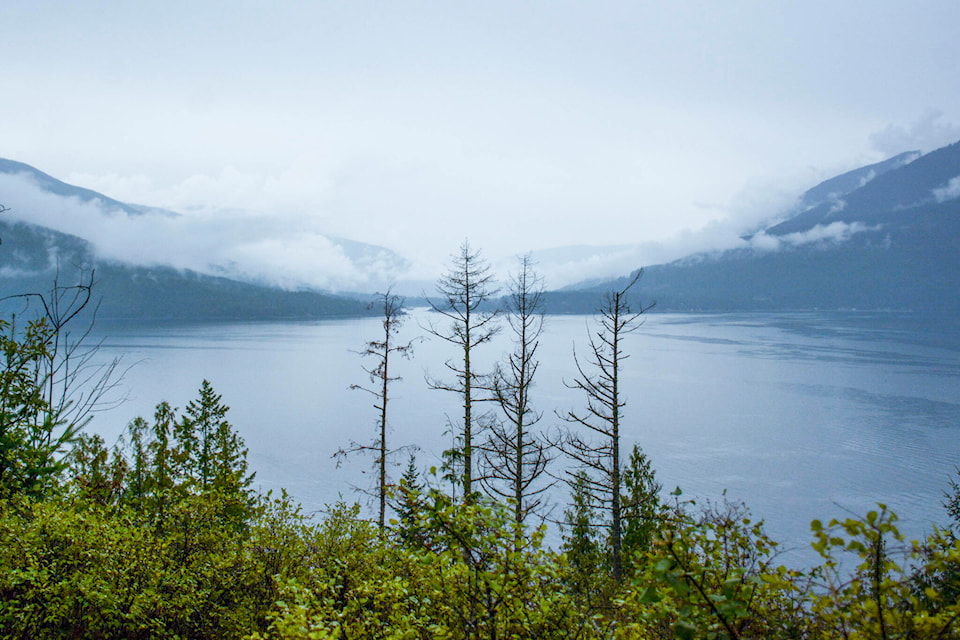by John Boivin
Local Journalism Initiative Reporter, Valley Voice
Staff with the Regional District of Central Kootenay have released their plans for the next steps to reducing the regional government’s carbon emissions to net zero by 2050.
The draft of the RDCK’s new climate action plan was released for public comment earlier this month, with the hopes it will be adopted by the board of directors in April.
Staff said the plan focuses on making greenhouse gas reduction work in the reality of the rural regional district, with its vast area and sparse population. That means particular challenges with developing public transportation, creating a more secure power grid, providing efficient services to a scattered populace, and building community resiliency.
“This action plan and the workbook that accompanies it is very much focused on rural communities … our communities are varied in size, from a small hamlet to a very large municipality,” said Paris Marshall Smith, the district’s sustainability manager. “We want to work with all communities, with a special attention to the rural landscape and really understanding what climate action means from a rural perspective.”
The goal is ambitious, with a target of net zero emissions of greenhouse gas by the regional government’s operations by 2050. When the program started in 2018, staff estimated the RDCK produced 192,000 tonnes of greenhouse gasses. It wants to cut that to 96,000 – half the baseline – by 2030.
To do that, staff consulted with individuals, community groups and government agencies to develop nearly 100 initiatives under 10 general pathways. The focus is in areas of the RDCK’s mandate – from land use planning and efficient building construction to waste management and sustainable agriculture practices.
Nearly two-thirds of the initiatives have already been announced or are underway, while the rest are new to this next phase of the plan.
Dozens of actions
The climate strategy is more than just buying a fleet of electric vehicles and calling it a day. Instead, a grassroots culture committed to climate action has to be developed.
“Unlike the quick wins of installing high-efficiency appliances or updating building codes, these cultural shifts often occur over longer periods of time and require extensive effort and patience from those influencing the change,” the report states.
“Building climate action culture is a multi-year process that will involve everyone and consider all aspects of the RDCK’s services. RDCK residents are invited to share ideas and will be invited to inform, design, collaborate, change, and help make decisions.”
Among the many projects and ideas are:
• develop more active transportation opportunities in communities;
• design long-lasting, energy-efficient buildings, and support residents to upgrade homes;
• reduce waste production and encouraging recycling, and eliminating organics from landfills by 2030;
• support local agriculture efforts to enhance food security;
• do more to cut water use, monitor ground and surface water, and better manage community water systems;
• do more flood and geohazard assessments and beef up emergency response systems;
• ensure board decisions are made taking into account impacts on climate;
• reduce risk from wildfire through better community planning and FireSmart programs.
The plan includes supporting and partnering with other levels of government, First Nations and community groups to take actions locally. Each year would see staff do a report card on progress, called the ‘State of Climate Action’ report.
Manager of community sustainability Chris Johnson said he thought the plan would find buy-in from the public.
“It’s worth noting many of the aspects of the plan are direct services to residents, and we were very intentional about that,” he said. “Those services available to residents via this plan offer multiple benefits, and one of them happens to be climate action. So when you think about our Regional Energy Efficiency Program, that gets a lot of dollars into people’s hands … that allows them to make their homes more affordable in the long run by making them more energy efficient.”
Grants, not tax dollars
Another important aspect of the plan is it won’t cost taxpayers money directly, Smith said. Over the next four years, the 35 or so new initiatives would see the hiring of two new staff positions, and cost about $1 million.
“We do not see this will be any significant cost to taxation, however, as we anticipate it will all be funded through grant funding,” said Smith.
Work on climate action began in 2019, when the board of directors of the regional government declared a “climate action imperative,” directing all departments to view their decision making through a climate lens – from land use to waste reduction to active transportation – and to “pursue opportunities that will further catalyze the RDCK as a climate action leader.”
It’s since developed the 100% Renewable Energy Plan and held public engagement sessions to work towards this latest plan of action, which is set to be in effect for four years “to ensure the RDCK’s climate action work stays dynamic and is able to integrate new and emerging policies and technologies.”
